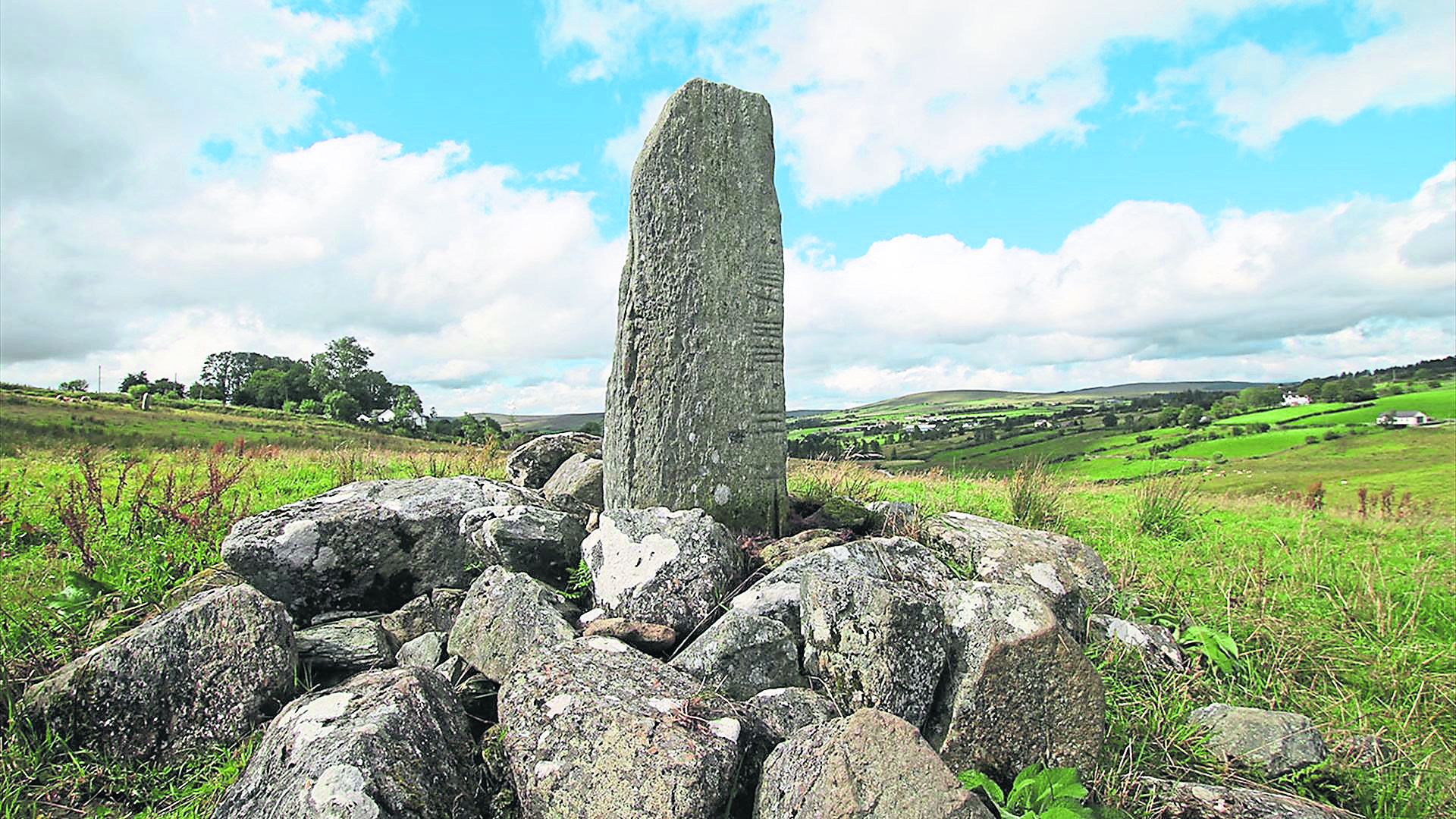In the hills of Greencastle, a historic stone bears what is believed to be an Ogham tribute to an ancient Celtic warrior.
Ogham is an ancient written language that was used in Ireland and parts of Britain between the fifth and ninth centuries.
The Ogham alphabet is the earliest known form of writing in Ireland and is seen as the first intellectual creation of Irish-speaking people.
There are actually two standing stones at this site on the Aughascribba Road outside Greencastle, but only one bears an Ogham inscription, making it the sole example of its kind in Tyrone and one of around 400 remaining across Ireland and western Britain.
Engraved on the Aghascrebagh stone is the barely legible name of two individuals. Modern interpretation suggests it reads, ‘Do Te Tto Maqi Maglant’, a tribute to two unknown men.
However, a 1931 article in the UH presented an alternative interpretation. According to the report, researchers of the time – including Kuno Meyer, WF Wakeman, Sir John Rhys, and Professor Macalister – examined the stone.
While their findings differed, one theory suggested the stone was a memorial to an ancient warrior named Dotecta, whose preferred weapon was the ‘brains of his foes’.
The article from June 20, 1931, recounted: “The Aghascrebagh Stone had been visited by such distinguished archaeologists as Kuno Meyer, WF Wakeman, Sir John Rhys, The Professor Macalister.
“Wakeman could make nothing of the inscription, Rhys hazarded a heading. Mayer died before his article on the subject was completed, and Macalister’s rendering might be taken as correct. It was a sepulchral monument to one ‘Dotecta.’
“Mr Campbell repeated the local tradition regarding the stone, which is to the effect that it was erected to the memory of a youthful warrior (Dotecta) who had made a great reputation by his own prowess and other people’s brains.
“It was the custom in those times, when one champion slew another in single combat, to cut off the victim’s head and extract his brain, which was mixed with lime or other components and rolled into a ball, dried, and kept as a trophy. These brain balls were considered most deadly ammunition for a sling – a sort of triumph of mind over matter.
“This wealth of brain power excited the envy of his superiors, especially the chief, who set about causing his downfall. On a charge of disobeying an order in marching his men to an unsuccessful engagement at Seskinshule by way of Crock, instead of Carnarancy, Dotecta was arrested at Formil and brought to Aghascrebagh stone, where he was left for the night.
“During the night, Dotecta frayed his ties, and when the executioners came, he sprang upon them. However, the rest of the army was ordered to kill him.
“After taking Dotecta down, they realised his strength and decided to bury him with full military honors, erecting the Ogham stone as a memorial.”
Long before this folklore, the site likely originated as a standing stone, a common feature of ancient Irish archaeology. Though it is not fully clear what their purpose was, experts believe standing stones were either used for religious ceremonies, markers of territories or landmarks for astrological events.
These stones were often found upright amongst a pile or circle of other stones.
For this one in Aghascrebagh, the Ogham inscription was added hundreds of years after it was believed to have been first erected.
Ogham itself was an Irish medieval alphabet of 20 characters, which is unlike any other texts in the world.
The writing comprises of parallel groups of one-five lines and their positioning depicts the meaning of what is being written.
This simplicity is compiled from a complex understanding of language and symbolism. Unlike Latin inscriptions, Ogham was typically carved vertically along the edge of a stone, wrapping around its sides.
The Aghascrebagh stone remains today as a testament to Ireland’s ancient history. Though weathered by centuries, it continues to fascinate local historians and visitors alike.







